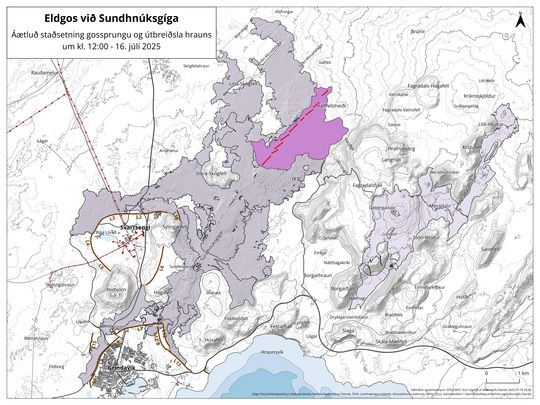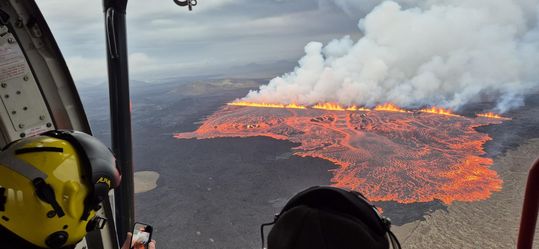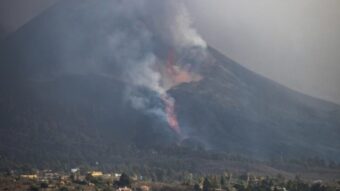Iceland volcanic eruption: New fissure opens at Sundhnúksgígaröð crater row

A new volcanic eruption began in Iceland on July 16, 2025, in the early morning hours, at the Sundhnúksgígaröð crater row on the Reykjanes Peninsula. According to the Icelandic Meteorological Office (IMO), a fissure of approximately 2.4 kilometers in length opened southeast of Litla-Skógfell. A second fissure about 500 meters long was identified west of the Fagradalsfjall volcano.
This was reported by G Business with reference to en.vedur.is.
Satellite data from ICEYE showed that by midday, the lava field had already covered around 3.2 square kilometers, primarily expanding eastwards across the Kálffellsheiði area and toward Svartsengi. Despite a slight decline in tremor levels and seismic activity, alert level 3 — the highest on the IMO scale — remains in effect.

Lava flow, air quality, and evacuation measures
The lava is currently not threatening infrastructure, but gas pollution is a growing concern. Dangerous concentrations of sulfur dioxide (SO₂) have been recorded in Reykjanesbær, Vogar, and Garð, with authorities urging residents to stay indoors, close windows, and turn off ventilation systems.
In addition, observers have reported so-called “witch’s hair” — thin volcanic glass fibers created when lava droplets cool rapidly and are stretched by wind. These fibers pose health risks and can cause skin and eye irritation.
A region under constant watch
The Sundhnúksgígaröð crater row is part of the Svartsengi volcanic system, one of Iceland’s most active zones. After 800 years of dormancy, the Reykjanes Peninsula has seen repeated eruptions since March 2021, when the neighboring Fagradalsfjall volcano erupted.
This eruption marks the fourth significant volcanic event in the area since December 2023. The region is closely monitored by seismic, GNSS, and satellite technologies. The Blue Lagoon, one of Iceland’s most famous tourist attractions, located near the Svartsengi geothermal power plant, was temporarily closed and evacuated as a precaution.
The IMO has published an updated hazard assessment map, valid through July 18, unless conditions change earlier. All monitored zones are under yellow alert (moderate hazard), with some areas near the fissures marked red (high risk due to lava and gas).

Stay connected for news that works — timely, factual, and free from opinion. Learn more about this topic and related developments here: Grape Stomping in Europe and Germany 2025: Where You Can Join the Tradition
